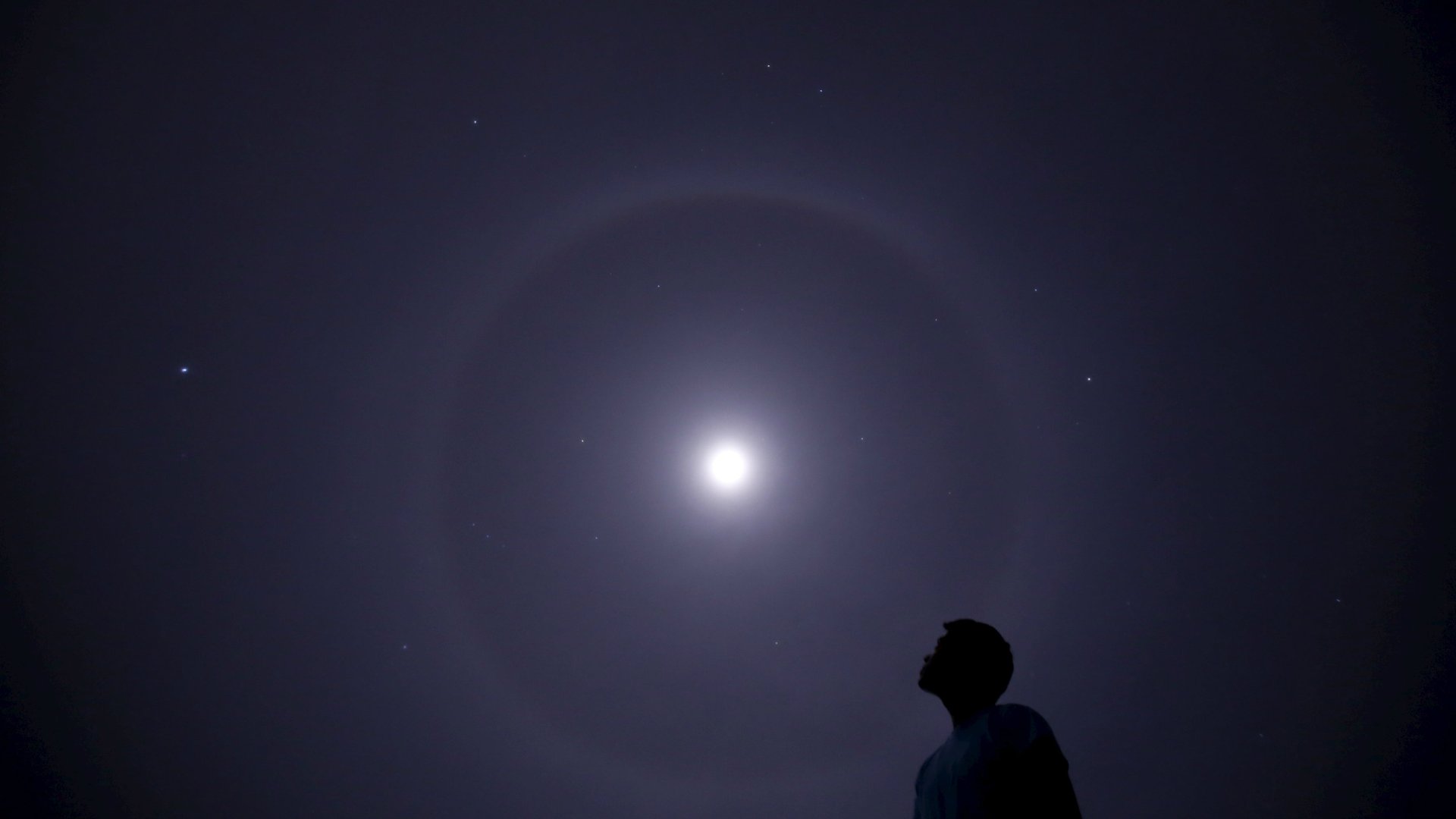There’s something just as cool as the solar eclipse going on right now that’s harder to see
Depending upon where they are on the globe, astronomy enthusiasts today (Sept. 18) are in for another unusual treat if they look skyward at the right time.


Depending upon where they are on the globe, astronomy enthusiasts today (Sept. 18) are in for another unusual treat if they look skyward at the right time.
In a rare celestial alignment, the moon floats directly between Venus, Mars, and Mercury and the Earth in a 24-hour span ending about 11pm US Eastern Time (3am GMT Sept. 19). This has the effect of hiding each of the planets from our terrestrial view. It will be the first time since March 2008 such an alignment will have occurred, and the last time until 2036, according to The New York Times (paywall). And thanks to calculations by the International Occultation Timing Association, astronomers say here is where stargazers will get the best views:
- To see the moon pass before Venus, the clearest sights will be experienced in Australia, New Zealand, and Indonesia.
- For Mars, the best spot will be in Hawaii and a few areas of Mexico.
- The trickiest of the three will be catching the occultation of Mercury, as it will generally best be seen over swaths of the Pacific Ocean.
Occultations aren’t as immediately dramatic as as the recent solar eclipse, which drew widespread attention across the US this summer. Yet they can be stunning sights when viewed from the right vantage point, with the right equipment. Take this May 2007 lunar occultation of Saturn, for example:
The occultation jackpot is that extremely rare occasion in which all the planets and Pluto come close to alignment. It’s never perfect because of their varying tilts and orbital angles. The last time they appeared in a similar part of the sky was way back in 949, and it won’t happen again until May 6, 2492.